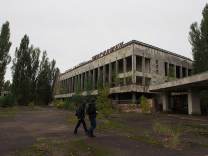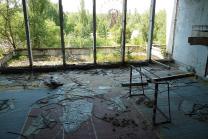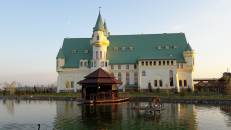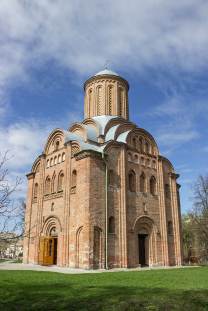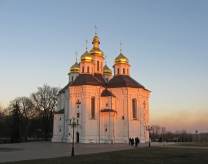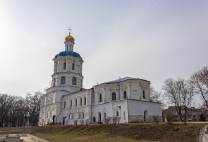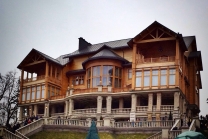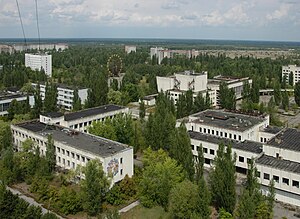
Pripyat
City of regional significance in Kiev Oblast, UkrainePripyat or Prypiat (/ˈpriːpjət, ˈprɪp-/ PREE-pyət, PRIP-yət; Ukrainian: При́п'ять, romanized: Prypiat, IPA: [ˈprɪpjɐtʲ]; Russian: При́пять, romanized: Pripyat') is a ghost city in northern Ukraine, near the Ukraine–Belarus border. Named after the nearby Pripyat River, the city was founded on February 4, 1970, as the ninth nuclear city (a type of closed city) in the Soviet Union, to serve the nearby Chernobyl Nuclear Power Plant. It was officially proclaimed a city in 1979 and had grown to a population of 49,360 by the time it was evacuated on the afternoon of April 27, 1986, the day after the Chernobyl disaster.
Although Pripyat is located within the administrative district of Ivankiv Raion, the abandoned municipality now has the status of city of oblast significance within the larger Kiev Oblast (province) and is administered directly from Kiev. Pripyat is also supervised by Ukraine's Ministry of Emergencies, which manages activities for the entire Chernobyl Exclusion Zone.
History
Background
Access to Pripyat, unlike cities of military importance, was not restricted before the disaster, as the Soviet Union deemed nuclear power stations safer than other types of power plants. Nuclear power stations were presented as achievements of Soviet engineering, harnessing nuclear power for peaceful projects. The slogan "peaceful atom" (Russian: мирный атом, romanized: mirnyy atom) was popular during those times. The original plan had been to build the plant only 25 km (16 mi) from Kiev, but the Ukrainian Academy of Sciences, among other bodies, expressed concern that would be too close to the city. As a result, the power station and Pripyat were built at their current locations, about 100 km (62 mi) from Kiev. After the disaster, the city of Pripyat was evacuated in two days.
A panorama of Pripyat during summer. The Chernobyl power plant, currently undergoing decommissioning, is visible in the distance, at top center.Post-Chernobyl years
In 1986, the city of Slavutych was constructed to replace Pripyat. After the city of...


